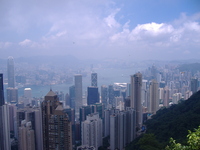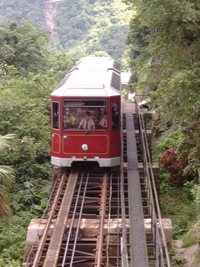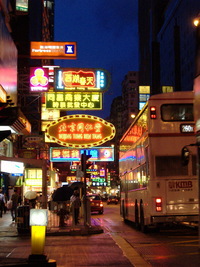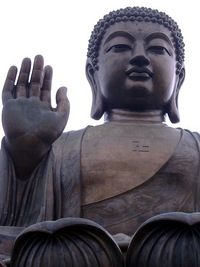Popular car hire locations in Hong Kong
Hong Kong
 Hong Kong became a British colony after the Opium Wars in 1860. It quickly developed into an extremely important commercial port within Asia, and became one of the richest and most cosmopolitan parts of the continent. The colony ceded back to Chinese rule in 1997, theoretically keeping a large degree of autonomy over internal affairs and the economy. However, there are powerful groups in China pushing for more control over Hong Kong from Beijing.
Hong Kong became a British colony after the Opium Wars in 1860. It quickly developed into an extremely important commercial port within Asia, and became one of the richest and most cosmopolitan parts of the continent. The colony ceded back to Chinese rule in 1997, theoretically keeping a large degree of autonomy over internal affairs and the economy. However, there are powerful groups in China pushing for more control over Hong Kong from Beijing.
Language
The vast majority in Hong Kong speak Cantonese as their first language. Since political unification with the Chinese mainland, Mandarin is increasingly being spoken in administrative circles. As a result of the British administration, most of the Hong Kong middle class speak good English. International business is conducted in English, and road signs are bilingual. The larger restaurants, hotels, and shops are English speaking, especially in the main business districts and the areas tourists frequent.
Currency
1 Hong Kong Dollar will buy you 0.12836 USD, 0.0691668 Pound Sterling and 0.102385 Euros as of the 13th October 06. The three main banks in Hong Kong (HSBC, Bank of China and Standard Chartered Bank) issue different types of banknotes, which are becoming increasingly standardised though at the moment you will notice a variety of colours, designs and sizes. The notes are issued in denominations of $10, $20, $50, $100, $500 and $1000. Many smaller shops will not take $1000 notes because of the high incidence of counterfeiting.
Weather
Hong Kong has a subtropical climate. It is pleasantly warm and dry in the Autumn. From November until April it is cool and humid, and hot, humid and wet through until late August. During the late spring and summer, typhoons become a concern. The municipal government will broadcast various levels of warning, ranging from 1 to 10. After level 8, many businesses, including shops, taxis and public transport will shut down, for insurance reasons.
Attractions
 For a fantastic panoramic view of the magnificent Hong Kong skyline, ascend the Victoria Peak to the viewing level. There are also restaurants and a museum in the complex.
For a fantastic panoramic view of the magnificent Hong Kong skyline, ascend the Victoria Peak to the viewing level. There are also restaurants and a museum in the complex.
Horse racing is very popular with locals, and a good way to get a feel for the typical lifestyle of a Hong Kong resident. There are two tracks with weekly races. Entrance is only $10, but drinking inside can be expensive. Bookmakers usually speak English and are happy to explain the intricacies of their betting system to curious westerners with deep pockets.
The Hong Kong Heritage Museum is a government-funded collection of artefacts and pieces of local art that tell the story of the Hong Kong people from well before the British arrival up until the modern day. There is an interactive section designed specifically for children, with games and puzzles that make learning about Hong Kongâs heritage fun.
Shopping
 Hong Kong is one of the best places to shop in Asia. The cityâs European influences have given it a taste for fashion and brand names. One of the main attractions for shoppers is the lack of an equivalent to VAT. Prices, especially of consumer electronics, are much cheaper than Europe and North America, and of a similar quality.
Hong Kong is one of the best places to shop in Asia. The cityâs European influences have given it a taste for fashion and brand names. One of the main attractions for shoppers is the lack of an equivalent to VAT. Prices, especially of consumer electronics, are much cheaper than Europe and North America, and of a similar quality.
The air conditioned shopping centres are generally found near Causeway Bay on Hong Kong Island, whereas the cheaper open-air street markets are found in Kowloon. These markets sell everything from groceries to clothes, electronics and souvenirs. While shopping here, vendors may try to heavily overcharge you, so a willingness to haggle and compare prices is sometimes necessary to secure a good deal. Most transactions involving small amounts, including fares for buses, trains and trams, and small items from convenience stores are paid for with an Octopus card. These are similar to the Londonâs Oyster cards. You buy a card from an approved vendor, and the value of that card can then be used to pay for public transport or items from convenience stores.
Nightlife
Drinking is beginning to become popular with the young generation, though for years it was somewhat alien to Cantonese culture. Having said this, there is a large number of British-style pubs and bars to cater for the ex-pat population in the city. You will find many westerners eating and drinking in the Lan Kwai Fong district on the central part of the island. In many ways this is the hub of the cityâs nightlife, with a high concentration of bars and restaurants.
Driving
- Hong Kong has 1,100 square km, 1,928 km of road and 525,000 registered vehicles. This makes for a congested road system, and each year 21,000 are killed in traffic accidents.
- Speed limits are generally 50km per hour in urban areas and 80km per hour on highways.
- The use of mobile phones whilst driving is prohibited.
- There is some good news for UK drivers; Hong Kong is one of the only other countries to drive on the left hand side of the road.
- 95% of the population use the efficient public transport system and their Octopus cards to get around.
Food and Drink
Hong Kong is well known for its excellent standard and variety of cuisine. It is one of the best places in the world to sample traditional Cantonese fare, including the ever popular dim sum, which is a selection of small starter dishes similar to Spanish Tapas. Other styles from China are represented, and there are many Western restaurants and fast food eateries. However, eating in these establishments is missing out on a great opportunity. The harbour area called Aberdeen is the best place to try Hong Kongâs great seafood. Waiters will bring live, freshly caught specimens right to your table for you to choose which you would like. In a disconcertingly short amount of time it will be on your plate and ready to eat.
Tourist Information
 There is a large tourist information office within the international airport.
There is a large tourist information office within the international airport.- Visitor Hotline +852 2508 1234
- Email: bejwwo@hktb.com
- Website: www.discoverhongkong.com



